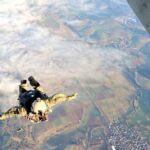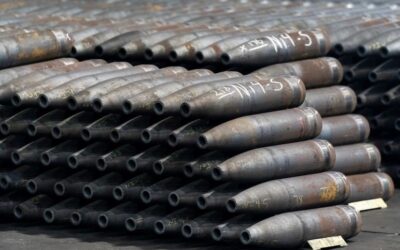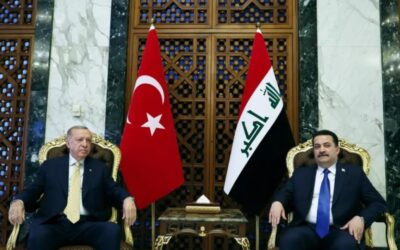INTERNATIONAL RELATIONS
INTERNATIONAL RELATIONS

The Taliban expanded their territory in northern Afghanistan on Sunday. They captured three more provincial capitals, including the large city of Kunduz, continuing their full-scale offensive, which the Afghan army appears unable to stop. Within hours, Islamist insurgents not only captured Kunduz after fierce fighting but at the end of the day seized Taloqan and Sar-e Pol as well. The last two are the capitals of the provinces south and east of Kunduz. They now occupy five of the 34 provincial capitals of Afghanistan.
A security official confirmed that government forces and local officials had fled to a nearby area due to the fact that the government sent no aid and in turn, they had to withdraw from the city. Zambula Mujahid, a Taliban spokesman, confirmed the Taliban occupation, saying that security had been restored in all cities at issue.
Additionally, a spokesman for Agence France-Presse in the city also confirmed that the Taliban have deployed fighters in all key buildings of Kunduz. The city of some 300,000 people, which had fallen to Islamists twice in 2015 and 2016, is a strategic crossroads in northern Afghanistan, between Kabul and Tajikistan.
The capture of Kunduz is the Taliban’s first major military success since their main attack in May. They took advantage of the commencement of foreign troops withdrawal, which is expected to be completed by August 31st. After occupying vast areas in the provinces with weak resistance, they turned against large urban centers surrounding provincial capitals and causing absolute chaos.
Also read: The Taliban now control more than half of Afghanistan regions
Neuralgic axis
In late June, the Taliban captured the Sir Khan Badar border post, on the Afghanistan-Tajikistan border, a key economic axis for Central Asia. The Ministry of Defence has assured that government forces are trying to recapture key areas of Kunduz, while according to officials, special forces are conducting operations aiming at regaining buildings, such as those of national radio and television.
Ibrahim Thural Bais, of the International Crisis Group (ICG), said that occupying Kunduz is of great importance, as it enables large numbers of Taliban fighters to move to other areas in northern Afghanistan. After Kunduz, Sar-e Pol also fell into the hands of the guerrillas, while on Saturday they had already occupied Sabergan in the north, the stronghold of the notorious warlord Abdul Rashid Dostum.
According to sources, government forces and the military withdrew to camps three kilometers away from Sar-e Pol. For his part, Mirwais Stanikzai, a spokesman for the Interior Ministry, said reinforcements had been sent to Sar-e Pol and Sembergan, including members of the Special Forces, saying that the cities that the Taliban want to take will soon become their graves.
Rapid advance
The inability of the authorities in Kabul to maintain control of northern Afghanistan may prove crucial to the government’s chances of survival. Northern Afghanistan was, after all, the area where the Taliban encountered the strongest resistance when they seized power in the country in the 1990s.
On Friday, Islamists also captured the city of Zaranj, the capital of Nimroz province (south), on the border with Iran. Kandahar (south) and Herat (west), Afghanistan’s second and third largest cities respectively, have also been under attack for several days, as has Lashkar Gah (south), the capital of the Taliban stronghold of Helmand province.
The rapid advance of Islamist militants has surprised both observers and Afghan security forces, despite support from the US Air Force.
The US has multiplied airstrikes, admits Nicole Ferrara, a spokeswoman for the US Central Command (USCENTCOM). She said on Saturday that the US forces have launched several airstrikes in recent days to defend our Afghan partners. Fighting and airstrikes have forced hundreds of thousands of Afghans to flee their homes.
The Taliban ruled the country from 1996 to 2001, imposing their own, extreme version of Islamic law, before being overthrown by the US-led invasion of an international military coalition.
Source: CNA
Also read: VIDEO | Afghanistan’s Fight Against Taliban – Air Force operations footage
NEWSLETTER SUBSCRIPTION
SIPRI | New record in global military spending
In 2023, global military spending set a new record for the ninth consecutive year, according to research by SIPRI, the Stockholm-based…
Iraq – Turkey | Sign more than 20 agreements
Turkish President, Recep Tayyip Erdogan, met with his Iraqi counterpart, Abdul Latif Rashid, in Baghdad on the occasion of his official…
Iraq | Εxplosion at military base south of Baghdad
A major explosion at a command post of the Iraqi Army took place today Saturday about 50 kilometers south of Baghdad…
SIPRI | New record in global military spending
In 2023, global military spending set a new record for the ninth consecutive year, according to research by SIPRI, the Stockholm-based…
Iraq – Turkey | Sign more than 20 agreements
Turkish President, Recep Tayyip Erdogan, met with his Iraqi counterpart, Abdul Latif Rashid, in Baghdad on the occasion of his official…
Lambda (λ) Automata | Autonomous surveillance solutions at “Investing in Deep Tech: Dual-Use Technologies” conference
The recent presentation of the start-up company Lambda Automata at the “Investing in Deep Tech: Dual-Use Technologies” conference…
VELOS ROTORS | Velos V3 UAS introduced as ideal example of dual-use systems
The “Investing in Deep Tech: Dual-Use Technologies” conference held at the Hellenic Armed Forces Officers’ Club in…
OCCAR | Additional Night Vision Goggles
The Director of the Organisation for Joint Armament Cooperation (OCCAR), Mr. Joachim Sucker, has signed a third amendment to…
Iraq | Εxplosion at military base south of Baghdad
A major explosion at a command post of the Iraqi Army took place today Saturday about 50 kilometers south of Baghdad…
















